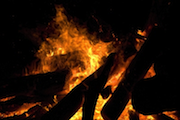My husband had training in a city 120 miles north of our home last week, and he invited me to go with him. I didn't attend the meeting--I sat in the hotel room and wrote. And studied the craft of writing. And read a great book (both for entertainment and to study). The result? Two Fabulous Days. I wish I could do that every week. But I can't. Neither can Grandpa (who watched the kids). I share this with you, not to make you jealous, but to pass along some of the tidbits I came away with. I'd already read Conflict & Suspense by James Scott Bell, back when I first purchased it, but re-scimming it brought details to my attention that I'd forgotten. I figure, if I've forgotten these things, so might others. So I present them to you now in this wonderfully haphazard fashion and hope that you get the same great benefits I did.
1. Obsession. It's a great word. It's also something that every character has. Love, sex, money, power, validation, revenge… whatever it is, your character needs it. Obsessions breed conflict, and lots of it. It also breeds opposition. Someone will oppose your character's obsession in an obsessive fashion, adding yet more conflict. And we all know that without conflict, there is no story.
2. The Unexpected. Readers love it when they're surprised. So when you're story gets a little boring and you can't figure out how to fix it, ask yourself "What does the reader expect to happen at the end of this scene?" Once you have the answer, write it down on a separate sheet of paper or a separate Word document. Then go back to your story and Do Something Else. You might want to brainstorm for a bit. Come up with 10 different ways your character could respond to the events in the scene. Then pick the best one that fits with the story and/or the theme.
3. Secrets. Everybody has secrets. Your characters should have them, too. Not only do they have them, but those secrets should be gradually revealed throughout the story in some dramatic fashion. (Non-dramatic reveals fall flat, so avoid those). The revelation of secrets will motivate unexpected actions from other characters, furnish surprise for the reader, and make the story stronger.
4. Theme. This short blog post isn't equipped to deal with the development and implementation of theme, I'm sorry to say. Look at some previous posts about theme if you're curious. What I found interesting in my reading was the idea of having my protagonist make an argument against my theme in the beginning of the book. For example, Dorothy in the Wizard of Oz stated at the beginning of the book/movie that she hoped to find some place where there was no trouble, a place she wanted to live. By the end of the movie, she realizes that place was home, where she started out.
5. Confrontation is the key to a great story, with frustration a close second. Any time your story is sagging, try to add confrontation or frustration and see if that helps.
That's just a taste of what I accomplished last week at my mini-retreat. I hope it helps you with your WIP. I'll return to Anatomy of Motive in my next post.
-Sonja











